An Interview With Compaq Co-Founder and CEO Rod Canion
This Sunday, AMC is premiering a new original series called Halt And Catch Fire. Set in the early 1980s, it tells the story of a band of cowboy entrepreneurs and engineers who join the PC Wars by cloning an IBM machine and taking on Big Blue for control of the nascent personal computer industry.
 AMC’s show is fictional, but it turns out, there is a true life story that is similar to this course of events, and it led to the creation of one of the greatest technology companies of all time, Compaq Computers.
AMC’s show is fictional, but it turns out, there is a true life story that is similar to this course of events, and it led to the creation of one of the greatest technology companies of all time, Compaq Computers.
Rod Canion was one of the co-founders of Compaq back in the early 80s, and he was there for the real world PC wars. He’s written a book about the time period, Open: How Compaq Ended IBM’s PC Domination and Helped Invent Modern Computing. In the interview below, I spoke to Rod about the book, the process of taking on Big Blue and cloning the IBM-PC, and how a series of incredible calculated gambles paid off to eventually build one of history’s most successful technology companies.
You can listen to the whole interview at the bottom of this post, or just read this lightly edited (and heavily compressed) summation of the story below.
Back in 1981…
Rod Canion, Jim Harris and Bill Murto were mid-level managers at Texas Instruments. Converts to the still nascent personal computer revolution, the trio decided to strike off on their own and form a company to produce a product in an entirely new category of PC: the portable. Portable PC’s were not laptops because the technology did not exist yet to make computers that small and light. Portables were designed to be moved from desk to desk easily, were rugged enough to travel with, and at around 30 pounds or so, had the form factor of a large-ish suitcase.
The first mass-produced portable computer was the Osbourne 1, which had come out earlier in the year. The Kaypro was also an early pioneer in this category, but both systems had their own unique and proprietary architecture, which limited their popularity and adoption. The computer industry had been transformed by the introduction of the IBM-PC in August of 1981. The imprimatur of the IBM brand was enough to convince millions of people to join the micro-computer revolution and the IBM-PC soon became the best-selling computer in the world.
And so, the trio from Texas Instruments had decided that their big idea would be to create the first portable that was compatible with the IBM-PC.
Rod Canion, from the interview:
It was one of those things that I literally felt a chill down my spine. The idea came together because it was really a combination of things that made it work. The idea for a portable computer–there were a number of those already in the market–the only reason we were actually even looking into that area was because (…) the first idea we had had, the venture capitalists decided not to fund it.
(…)
The morning of January the 8th, 1982 (…) I was going over the idea of a portable computer. How could we make one that was differentiated enough to make it worthwhile? (…) Not being able to get software developed for it was a killer. (…) Every computer ran different software. There were literally somewhere close to 300 different computer companies making new computers at the time. (…) That morning, the idea hit me that, what if we could make our computer run software that already was out there? That is, run the software for the product that was getting the most software and always getting the software first when the new one came out, and that was the IBM-PC.
Because the IBM-PC was so popular, most developers programmed for the PC first, and all the best applications and programs could be found on the PC. But because IBM had famously rushed the PC to market, its system was made up of off-the-shelf components and software. Anyone could purchase the same off-the-shelf hardware and software and “clone” an IBM-PC.
Again, Rod Canion:
Because IBM had done something they had never done before, which was bring a computer to market that wasn’t just totally protected from the copying standpoint. We didn’t want to copy their computer! We wanted to have access to the software that was written for their computer by other people.
The idea was to create a computer that was mostly like IBM-PC and mostly ran all the same software, but sold at a cheaper price point. The first company to pursue this strategy was Columbia Data Products, followed by Eagle Computer. But soon, most of the big names in the young computer industry (Xerox, Hewlett-Packard, Digital Equipment Corporation, Texas Instruments, and Wang) were all producing PC clones.
But all of these machines were only mostly PC-compatible. So, at best, they were DOS compatible. But there was no guarantee that each and every program or peripheral that ran on the IBM-PC could run on a clone. The key innovation that Canion, Harris and Murto planned to bring to market under the name Compaq Computer Corporation would be a no-compromises, 100% IBM-PC compatibility. This way, their portable computer would be able to run every single piece of software developed for the IBM-PC. They would be able to launch their machine into the largest and most vibrant software ecosystem of the time, and users would be able to use all their favorite programs on the road.
We couldn’t have done it if IBM hadn’t done exactly what they did because nobody else… Apple certainly wouldn’t have stood for us to make a product that ran their software. They had enough protection on it to prevent that, as did all the others. IBM–the best one to pick–also happened to be the only one that wasn’t protected and it was because of this sort of strange thing. They didn’t believe much in the market, they just rushed a one-year project to get to market.
Compaq lined up venture financing–most famously from a young John Doerr at Kleiner Perkins. With this money, they quickly hired as many young programmers and engineers as they could, being careful not to poach from or anger their former employer. The key to cloning the IBM-PC was to reverse engineer the BIOS, which was the one piece of the machine that was proprietary IBM technology. But that was a tricky proposition. The BIOS had been published in the user manual, but anyone who had even looked at the BIOS code couldn’t work on rewriting it for fear of tainting the project. Running afoul of IBM’s intellectual property would doom the project.
There were actually a few companies that went in and just started copying out of the manual and they ended up getting sued and shut down.
(…)
We knew there was a way to do it. We believed we could do it legally. We didn’t just assume things. We hired the best intellectual property attorneys we could find and used their strict guidance to help us do the reverse engineering very carefully.
(…)
What our lawyers told us was that, not only can you not use it [the copyrighted code] anybody that’s even looked at it–glanced at it–could taint the whole project. (…) We had two software people. One guy read the code and generated the functional specifications. So, it was like, reading hieroglyphics. Figuring out what it does, then writing the specification for what it does. Then, once he’s got that specification completed, he sort of hands it through a doorway or a window to another person who’s never seen IBM’s code, and he takes that spec and starts from scratch and writes our own code to be able to do the exact same function.
With a small team and a budget that was an infinitesimal fraction of IBM’s yearly revenues, the Compaq team succeeded in their task in 9 short months.
In November of 1982, the Compaq Portable was launched as the first 100% PC compatible machine in the world. Compaq’s machine was so good, in fact, that it proved to be more compatible–especially more backwards-compatible with older software and peripherals–than IBM’s own machines were. One reviewer said that Compaq was more IBM compatible than even IBM was.
[We had] just a bull-headed commitment to making all the software run. We were shocked when we found out none of our competitors had done it to the same degree. We could speculate on why they had stopped short of complete compatibility: It was hard. It took a long time. And there was a natural rush to get to market. People wanted to be first. There was only one thing for us: we didn’t have a product if we couldn’t run the IBM-PC software. And if you didn’t run all of it, how would anyone be confident enough to buy your computer, if they didn’t know they were always going to be able to run new software? We took it very, very seriously.
The Compaq Portable was immediately and wildly successful. In its first year of sales, Compaq sold 53,000 machines, generating sales of $111 million and making Compaq the fastest start-up to hit the $100 million mark, that quickly in its existence. IBM eventually launched a portable of it’s own, but again, the Compaq models proved to be more compatible, as well as more rugged and reliable. Compaq machines eventually outsold IBM portables 10-to-1.
Flush with this success, Compaq attacked IBM on its own turf, launching a range of full-functioning desktop computers. When IBM was slow to embrace Intel’s next generation 386 chip, Compaq seized the moment and launched the first 386 system, thereby leaping to the head of the technological pack. Building off its cloning strategy, Compaq was a leader in moving the computer industry to a new standard, based upon the original IBM-PC paradigm, but no-longer led by IBM. When IBM retrenched and tried to enact a closed, proprietary system with the PS/2 line, Compaq led the way in defending the clone model that IBM was attempting to eradicate. Instead of the “IBM standard” computers moved toward the “industry standard” that became the PC we remember from the late 80s and early 90s. This standard is largely remembered as the “Wintel” duopoly (for Windows software and Intel chips) but a forgotten third leg of this stool is Compaq, which did more than any other manufacturer to ensure the survival and dominance of the industry standard model that had grown out of the IBM-PC, but was no longer beholden to it.
We were really almost the magician in the back room guiding it [the industry]. (…) Backward-compatibility, that was the key technology to begin to stop IBM’s advance with their new PS/2. I mean, they sold millions of those. People look back now and say, “Oh, that was a bad idea.” Well, it was viewed as a great idea at the time! And was about to succeed. (…) All the other computer companies were buying licenses from IBM and beginning to build PS/2 compatibles. (…) It [was] gonna be an IBM-dominated and controlled ballgame. We couldn’t accept that.
Heck, as Rod points out, it’s a little known fact that the version of DOS that was eventually used on most 100% IBM compatible computers was a version that Compaq licensed back to Microsoft after reverse engineering that as well. So, it can be argued that Compaq played a forgotten but key role in Microsoft’s eventual rise to world domination.
It’s one of those strange things. We kept it secret because it seemed like it would just muddy the water for our competitors… for Microsoft. (…) There was a lot of interest in, well, let’s give this version back to Microsoft, and let it become their standard. From Microsoft’s standpoint, all of their computer companies that were using MS-DOS wanted a compatible version. (…) We were recognized as by-far the most compatible. So, we were giving Microsoft something their customers were asking for. So, we were able to license back to them… Microsoft does whatever they do with it and gets it ready to become their standard version of Microsoft [sic] and then begins to sell it to all the other computer companies.
It’s somewhat forgotten today, but Compaq was perhaps the biggest winner of the original PC wars. By 1986, it became the the youngest-ever firm to break into the Fortune 500. In 1987, Compaq hit the $1 billion revenue mark, becoming the fastest ever company to reach that milestone. By the late 90s and early 2000s, Compaq was the largest PC manufacturer in the world, before it was absorbed by Hewlett Packard. Today the Compaq brand is the lower-end representative of HP’s computer business. And IBM is no longer even a PC manufacturer.
Everybody always thinks of intellectual property as building an immovable wall that your competitors can’t come in. And that just wasn’t the way it worked in an industry standard environment. (…) When the industry standard began to develop, it threw a twist into it that nobody really got for a long time. Fortunately for Compaq, we “got it” because we were at the heart of it being created. (…) We were driving [the industry] instead of trying to figure out what was going on around us. And IBM never got that part of it.
One part of the history that AMC’s new show gets right is that in the early 80s, Texas really was a hub for technology innovation, especially in the PC manufacturing realm. Silicon Prairie is the cute branding term. How exactly did that happen?
You know, a lot of people have asked that question, and it’s hard to put your finger on it. (…) It dawned on me one day that, at the time, of the five companies that at one time had been in the top two or three PC companies… of the top five, three had been from Texas! Apple was from the west coast. IBM from the east coast. But the first one had been Tandy. They were the leader for a while before IBM came along. And then, Compaq came along. (…) And then Dell came along behind us, using the foundation we had built. (…) There’s a certain risk-taking gene almost that runs through a lot of Texans.
Is Rod planning on watching Halt And Catch Fire?
I have not looked at the whole episode. I’ve seen the trailer for it. I am gonna watch it. It looks pretty exciting. It may actually be as exciting as the real thing.
Listen To The Interview:
Rod’s Book
Trailer For Halt And Catch Fire
(Note: Since some have asked, just wanted to make it clear that I have not been paid or given consideration or in any way encouraged by AMC, Rod Canion or anyone else to do this episode and post. Just found it interesting and timely.)






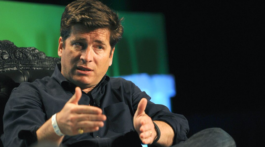

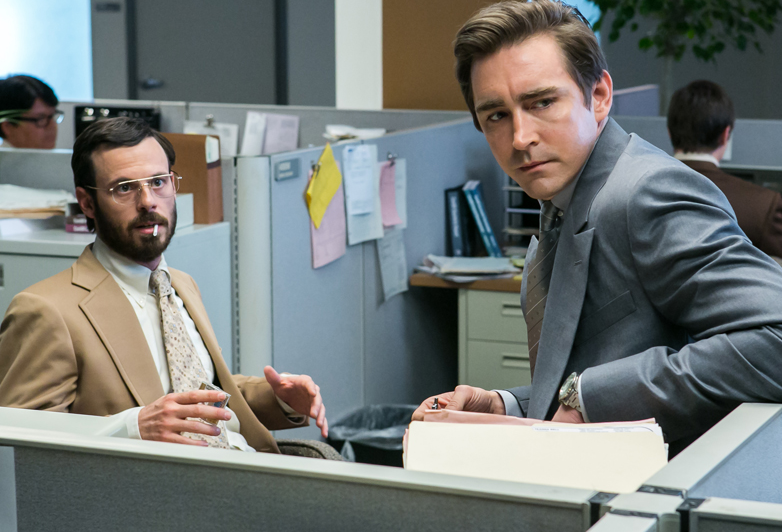

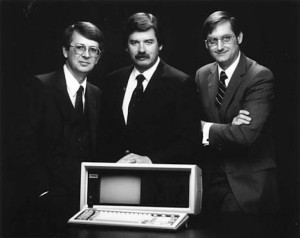

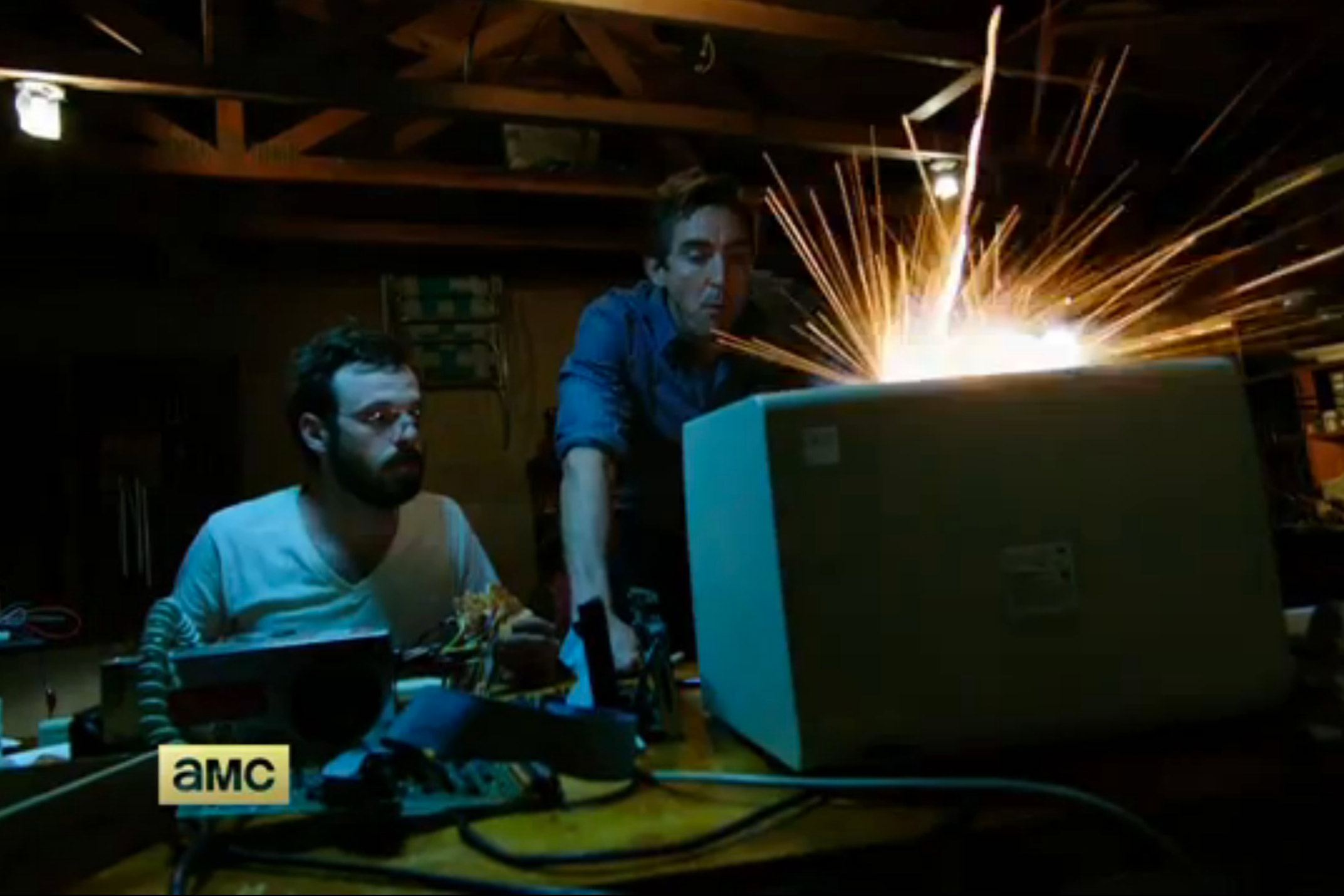
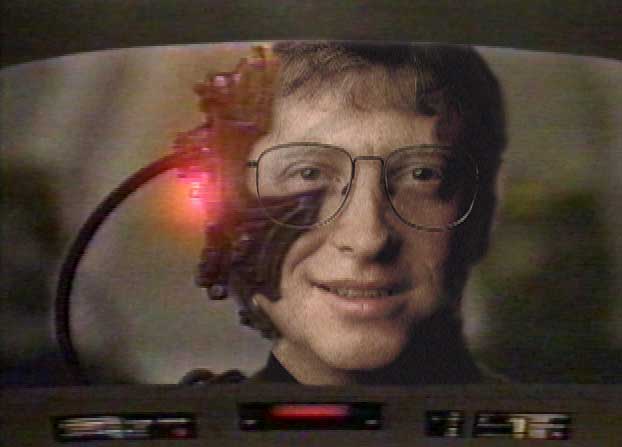

[…] The Incredible True Story Behind AMC’s Halt And Catch Fire – How Compaq Cloned IBM And C…[Via Internet History Podcast] […]
This is all very well and clever, but misinformed, due to its US-centricness. Olivetti beat Compaq to the punch and did a rather better job of it. Olivetti’s engineers at Cupertino started from first principles and produced a PC compatible (called the M24) with the specifications and about twice as fast as the IBM original.
These PCs were sold in the US through AT&T.
Compaq beat Olivetti to market by nearly a year and had the design completed by November of 1982, releasing in March of 1983.
Olivetti didn’t release their IBM compatible until months later.
So, no, Olivetti did not beat Compaq to the punch.
Thanks for the correction!
Thanks Nicole! I knew nothing about Olivetti. Happy to get corrections with new info (new to me, of course). Still, you’d have to admit that Rod’s story still fits as a template/inspiration for Halt and Catch Fire, which was the original point of the story.
Nicole- Compaq’s portable was released more than a year ahead of Olivetti’s M24 and had already sold more than 53,000 units by the time the M24 hit the market. The M24 did have a better spec and features and lower price than IBM.
Very interesting.
I like the story, but it is missing some big Texas Instruments sub-themes.
Texas Instruments rejected the concept of a spreadsheet (and the ‘Office’ suite’ in 1978 while it was developing the SR-70. Also, TI hired ‘MicroSoft’ in 1977 to provide its Basic interpreter. TI then gave in to Microsoft for its BIOS. The TI-99 was thus based upon a set of software that it could never own.
Sadly, when the SR-70 was being developed in Lubbock, management changed in the Marketing area, putting a PhD (Jerry Maxwell) into power. He could not understand the potential of the spreadsheet. He could not understand the need to extend the TI imprimatur of ‘calculation’ into the PC world. He could have won for TI, and yet he (and Stav Prodomo) rejected it and convinced the new overall Division manager (Rex Naden), to shuck the concept.
In February, 1978 a Harvard Business 2nd year came to interview for a job. As I had attended there the prior year, he was assigned to me for the process. He was allowed to view our business plan (for the spreadsheet (we called it the ‘Table Processor’) and the office functions (the ‘Memo/Word Processor’; the ‘Point Path’ Processor, the ‘File Manager’; the ‘Database Processor’; the ‘Data Processor’ and the ‘Communications’ manager’). He fell in love with it, and wanted to start at TI. He became disgruntled when TI decided against it, and recruited me into his venture (Personal Software). Visicalc was the result, and the rest is history. Sadly, he (Dan Fylstra) was not as honest as I had hoped, and essentially stole the entire business plan after TI released it to me.
See much of the plan at http://www.dvandusen.com/visicalc_story/index.htm . There is more that was not put online if you are interested.
Interestingly, we did indeed have a very smart woman (Susan) who the actress (the wife) closely models. She was a programmer who was never trusted or fully utilized.
The management team mentioned went on to Milton Bradley, RadioShack, etc.
[…] “Halt” follows a storyline similar to the rise of Compaq Computers, a major player in the rise of home computers, according to Internet History Podcast. […]
[…] loosely based on a real-life story about the development of the Compaq portable computer. See this article for details about the early days of Compaq. In Episode I, Cardiff Electric hires Joe MacMillan, a […]
[…] Over at The Internet History Podcast there was a really cool interview with Rod Canion, one of the co-founders of Compaq, one of the guys who did in real life what the actors in Halt And Catch Fire pretend to do every Sunday. Like jumping through the legal hoops: […]
[…] para ver la forma en la que podrían llevarlo a cabo. Rod Canion, uno de los fundadores de Compaq, explicaba en una entrevista todo el proceso y cómo realmente su objetivo no era copiar, sino lograr crear el […]
[…] ver la forma en la que podrían llevarlo a cabo. Rod Canion, uno de los fundadores de Compaq, explicaba en una entrevista todo el proceso y cómo realmente su objetivo no era copiar, sino lograr […]
[…] para ver la forma en la que podrían llevarlo a cabo. Rod Canion, uno de los fundadores de Compaq, explicaba en una entrevista todo el proceso y cómo realmente su objetivo no era copiar, sino lograr crear el […]
[…] para ver la forma en la que podrían llevarlo a cabo. Rod Canion, uno de los fundadores de Compaq, explicaba en una entrevista todo el proceso y cómo realmente su objetivo no era copiar, sino lograr crear el […]
[…] said in an interview on the Internet History Podcast, “We didn’t want to copy their computer! We wanted to have access to the software that was […]
[…] you’ll remember a few years ago I spoke with Rod Canion about how Compaq created the industry standard computer platform that finally supplanted IBM. Well, […]
[…] company called Cardiff-Electric. And I hear this fictional story is largely based on the real story of Compaq. Part of the reason I liked it so much was because the team of characters and the issues they […]
I always heard it called Silicon Hiils during that time
[…] Internet History Podcast, Episode 18 (Pauses Removed) […]
[…] essentially useless. Teardowns even take place in the corporate world, like when Compaq successfully reverse-engineered the IBM BIOS—that is, the firmware that manages input-output operations in computers—in the […]
[…] inútil. Los desmantelamientos se producen incluso en el mundo corporativo, como cuando Compaq hizo con éxito ingeniería inversa en el BIOS de IBM, es decir, descubrió la programación que gestiona las operaciones de entrada y […]
[…] essentially useless. Teardowns even take place in the corporate world, like when Compaq successfully reverse-engineered the IBM BIOS—that is, the firmware that manages input-output operations in computers—in the […]
[…] But wait, there was one critical part of this story that I excluded! IBM wasn’t completely stupid: while much of the IBM PC was outsourced, the BIOS — Basis Input/Output System, which was the firmware that that actually turned on the PC hardware and loaded the operating system — was copyrighted, and, IBM presumed, defensible in court. Compaq, though, figured out how to reverse-engineer the BIOS anyways. Rod Canion, who co-founded Compaq, explained on the Internet History Podcast: […]
[…] * Hur compaq gick runt intrångsbestämmelserna för IBM BIOS […]
[…] historia de Compaq y cómo difiere de la que nos cuentan en Halt and Catch Fire, podéis recurrir a este episodio del Internet History Podcast con uno de sus […]
[…] Article […]
[…] Read More […]
I attended a forum at Comdex on the subject of spreadsheets and related software. As I remember, this was the mid to late 1980’s. The subject of color vs monochrome was brought up and the Lotus 1-2-3 representative, a VP, strongly stated that color was of no value in the business world. He might have also said that graphs were also not valuable, but I don’t remember.
The Excel (Microsoft VP) representative tried to help him out by clarifying (spinning) what the Lotus guy said, but the Lotus guy was adamant. There were mumblings throughout the large crowd, but the statement stood.
At that time, other companies, especially Harvard Graphics, were selling add on packages for the Lotus product. They sold quite well, but Lotus apparently just didn’t get it. Since Excel had that build in, the add-ons didn’t last terribly long. Too bad for Lotus that they couldn’t see what was coming and why color and graphs are so important.
During that time frame, I programmed in a suite that was supposed to compete with Microsoft Office but was supposed to be much better. It also didn’t last too long because it was incredibly hard to learn and use. Don’t remember it’s name, but I do remember that the set of manuals totaled well over a foot wide. I used dBase instead.
We ran that on some 80286 machines from IBM. They were bleeding edge at the time and each one cost around the price of a new car. I remember going through five keyboards before getting one that worked properly. The IBM rep angrily asked me why I was breaking them. I opened up the last defective one to see inside. The wires from the keyboard to the cord to the computer had never been soldered, they were just laying in there.
At my next job, they bought a set of PS/2 machines against my objections. The department manager said that his clients would have faith in us when they learned we were using IBM brand machines. Within a few months the server’s hard drive went bad. It took them several weeks to replace it because they didn’t have any in stock. This was running a critical application that had to run properly every day. They did the calculations by hand for those weeks. No client ever asked us what brand of machines we used.
Another department bought a Compaq desktop and let the user design the specifications. Immediately, she realized it was way too slow to allow her to work effectively. She asked me to investigate options so I called the dealer. He said we could have the CPU chip upgraded. Great. It would only cost half the price of a new car to swap out that CPU. JUST the CPU chip, not the entire computer. It was the equivalent of $15,000 in today’s dollars they said.